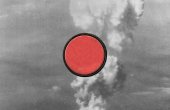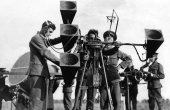The Devastating Effects of Nuclear Weapons

What can nuclear weapons do? How do they achieve their destructive purpose? What would a nuclear war — and its aftermath — look like? In the article that follows, excerpted from Richard Wolfson and Ferenc Dalnoki-Veress’s book “Nuclear Choices for the Twenty-First Century,” the authors explore these and related questions that reveal the most horrifying realities of nuclear war.
A Bomb Explodes: Short-Term Effects
The most immediate effect of a nuclear explosion is an intense burst of nuclear radiation, primarily gamma rays and neutrons. This direct radiation is produced in the weapon’s nuclear reactions themselves, and lasts well under a second. Lethal direct radiation extends nearly a mile from a 10-kiloton explosion. With most weapons, though, direct radiation is of little significance because other lethal effects generally encompass greater distances. An important exception is the enhanced-radiation weapon, or neutron bomb, which maximizes direct radiation and minimizes other destructive effects.
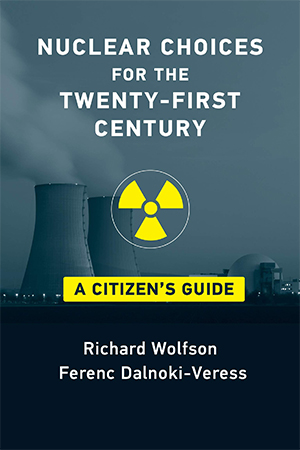
An exploding nuclear weapon instantly vaporizes itself. What was cold, solid material microseconds earlier becomes a gas hotter than the Sun’s 15-million-degree core. This hot gas radiates its energy in the form of X-rays, which heat the surrounding air. A fireball of superheated air forms and grows rapidly; 10 seconds after a 1-megaton explosion, the fireball is a mile in diameter. The fireball glows visibly from its own heat — so visibly that the early stages of a 1-megaton fireball are many times brighter than the Sun even at a distance of 50 miles. Besides light, the glowing fireball radiates heat.
This thermal flash lasts many seconds and accounts for more than one-third of the weapon’s explosive energy. The intense heat can ignite fires and cause severe burns on exposed flesh as far as 20 miles from a large thermonuclear explosion. Two-thirds of injured Hiroshima survivors showed evidence of such flash burns. You can think of the incendiary effect of thermal flash as analogous to starting a fire using a magnifying glass to concentrate the Sun’s rays. The difference is that rays from a nuclear explosion are so intense that they don’t need concentration to ignite flammable materials.
The intense heat can ignite fires and cause severe burns on exposed flesh as far as 20 miles from a large thermonuclear explosion.
As the rapidly expanding fireball pushes into the surrounding air, it creates a blast wave consisting of an abrupt jump in air pressure. The blast wave moves outward initially at thousands of miles per hour but slows as it spreads. It carries about half the bomb’s explosive energy and is responsible for most of the physical destruction. Normal air pressure is about 15 pounds per square inch (psi). That means every square inch of your body or your house experiences a force of 15 pounds. You don’t usually feel that force, because air pressure is normally exerted equally in all directions, so the 15 pounds pushing a square inch of your body one way is counterbalanced by 15 pounds pushing the other way. What you do feel is overpressure, caused by a greater air pressure on one side of an object.
If you’ve ever tried to open a door against a strong wind, you’ve experienced overpressure. An overpressure of even 1/100 psi could make a door almost impossible to open. That’s because a door has lots of square inches — about 3,000 or more. So 1/100 psi adds up to a lot of pounds. The blast wave of a nuclear explosion may create overpressures of several psi many miles from the explosion site. Think about that! There are about 50,000 square inches in the front wall of a modest house — and that means 50,000 pounds or 25 tons of force even at 1 psi overpressure. Overpressures of 5 psi are enough to destroy most residential buildings. An overpressure of 10 psi collapses most factories and commercial buildings, and 20 psi will level even reinforced concrete structures.

People, remarkably, are relatively immune to overpressure itself. But they aren’t immune to collapsing buildings or to pieces of glass hurtling through the air at hundreds of miles per hour or to having themselves hurled into concrete walls — all of which are direct consequences of a blast wave’s overpressure. Blast effects therefore cause a great many fatalities. Blast effects depend in part on where a weapon is detonated. The most widespread damage to buildings occurs in an air burst, a detonation thousands of feet above the target. The blast wave from an air burst reflects off the ground, which enhances its destructive power. A ground burst, in contrast, digs a huge crater and pulverizes everything in the immediate vicinity, but its blast effects don’t extend as far. Nuclear attacks on cities would probably employ air bursts, whereas ground bursts would be used on hardened military targets such as underground missile silos. As you’ll soon see, the two types of blasts have different implications for radioactive fallout.
How far do a weapon’s destructive effects extend? That distance — the radius of destruction — depends on the explosive yield. The volume encompassing a given level of destruction depends directly on the weapon’s yield. Because volume is proportional to the radius cubed, that means the destructive radius grows approximately as the cube root of the yield. A 10-fold increase in yield then increases the radius of destruction by a factor of only a little over two. The area of destruction grows faster but still not in direct proportion to the yield. That relatively slow increase in destruction with increasing yield is one reason why multiple smaller weapons are more effective than a single larger one. Twenty 50-kiloton warheads, for example, destroy nearly three times the area leveled by a numerically equivalent 1-megaton weapon.
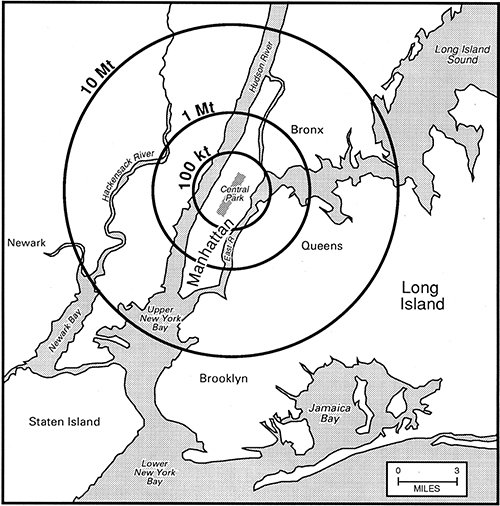
What constitutes the radius of destruction also depends on the level of destruction you want to achieve. Roughly speaking, though, the distance at which overpressure has fallen to about 5 psi is a good definition of destructive radius. Many of the people within this distance would be killed, although some wouldn’t. But some would be killed beyond the 5-psi distance, making the situation roughly equivalent to having everyone within the 5-psi circle killed and everyone outside surviving. The image to the left shows how the destructive zone varies with explosive yield for a hypothetical explosion. This is a simplified picture; a more careful calculation of the effects of nuclear weapons on entire populations requires detailed simulations that include many environmental and geographic variables.
The blast wave is over in a minute or so, but the immediate destruction may not be. Fires started by the thermal flash or by blast effects still rage, and under some circumstances they may coalesce into a single gigantic blaze called a firestorm that can develop its own winds and thus cause the fire to spread. Hot gases rise from the firestorm, replaced by air rushing inward along the surface at hundreds of miles per hour. Winds and fire compound the blast damage, and the fire consumes enough oxygen to suffocate any remaining survivors.
During World War II, bombing of Hamburg with incendiary chemicals resulted in a firestorm that claimed 45,000 lives. The nuclear bombing of Hiroshima resulted in a firestorm; that of Nagasaki did not, likely because of Nagasaki’s rougher terrain. The question of firestorms is important not only to the residents of a target area: Firestorms might also have significant long-term effects on the global climate, as we’ll discuss later.
Fallout
Both nuclear and conventional weapons produce destructive blast effects, although of vastly different magnitudes. But radioactive fallout is unique to nuclear weapons. Fallout consists primarily of fission products, although neutron capture and other nuclear reactions contribute additional radioactive material. The term fallout generally applies to those isotopes whose half-lives exceed the time scale of the blast and other short-term effects. Although fallout contamination may linger for years and even decades, the dominant lethal effects last from days to weeks, and contemporary civil defense recommendations are for survivors to stay inside for at least 48 hours while the radiation decreases.
The fallout produced in a nuclear explosion depends greatly on the type of weapon, its explosive yield, and where it’s exploded. The neutron bomb, although it produces intense direct radiation, is primarily a fusion device and generates only slight fallout from its fission trigger. Small fission weapons like those used at Hiroshima and Nagasaki produce locally significant fallout. But the fission-fusion-fission design used in today’s thermonuclear weapons introduces the new phenomenon of global fallout. Most of this fallout comes from fission of the U-238 jacket that surrounds the fusion fuel. The global effect of these huge weapons comes partly from the sheer quantity of radioactive material and partly from the fact that the radioactive cloud rises well into the stratosphere, where it may take months or even years to reach the ground. Even though we’ve had no nuclear war since the bombings of Hiroshima and Nagasaki, fallout is one weapons effect with which we have experience. Atmospheric nuclear testing before the 1963 Partial Test Ban Treaty resulted in detectable levels of radioactive fission products across the globe, and some of that radiation is still with us.
Fallout differs greatly depending on whether a weapon is exploded at ground level or high in the atmosphere. In an air burst, the fireball never touches the ground, and radioactivity rises into the stratosphere. This reduces local fallout but enhances global fallout. In a ground burst, the explosion digs a huge crater and entrains tons of soil, rock, and other pulverized material into its rising cloud. Radioactive materials cling to these heavier particles, which drop back the ground in a relatively short time. Rain may wash down particularly large amounts of radioactive material, producing local hot spots of especially intense radioactivity. A hot spot in Albany, New York, thousands of miles from the 1953 Nevada test that produced it, exposed area residents to some 10 times their annual background radiation dose. The exact distribution of fallout depends crucially on wind speed and direction; under some conditions, lethal fallout may extend several hundred miles downwind of an explosion. However, it’s important to recognize that the lethality of fallout quickly decreases as short-lived isotopes decay.
Recommended Response to a Nuclear Explosion
The United States government has recently provided guidance on how to respond to a nuclear detonation. One recommendation is to divide the region of destruction due to blast effects into three separate damage zones. This division provides guidance for first responders in assessing the situation. Outermost is the light damage zone, characterized by “broken windows and easily managed injuries.” Next is the moderate damage zone with “significant building damage, rubble, downed utility lines and some downed poles, overturned automobiles, fires, and serious injuries.” Finally, there’s the severe damage zone, where buildings will be completely collapsed, radiation levels high, and survivors unlikely.
The recommendations also define a dangerous fallout zone spanning different structural damage zones. This is the region where dose rates exceed a whole-body external dose of about 0.1 Sv/hour. First responders must exercise special precautions as they approach the fallout zone in order to limit their own radiation exposure. The dangerous fallout zone can easily stretch 10 to 20 miles (15 to 30 kilometers) from the detonation depending on explosive yield and weather conditions.
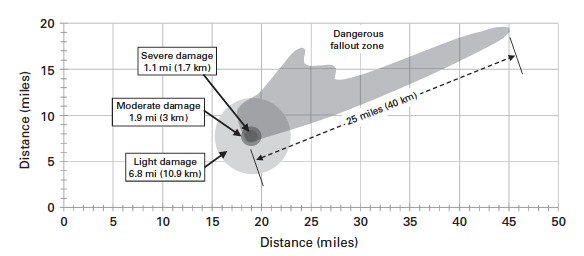
Electromagnetic Pulse
A nuclear weapon exploded at very high altitude produces none of the blast or local fallout effects we’ve just described. But intense gamma rays knock electrons out of atoms in the surrounding air, and when the explosion takes place in the rarefied air at high altitude this effect may extend hundreds of miles. As they gyrate in Earth’s magnetic field, the electrons generate an intense pulse of radio waves known as an electromagnetic pulse (EMP).
A single large weapon exploded some 200 miles over the central United States could blanket the entire country with an electromagnetic pulse intense enough to damage computers, communication systems, and other electronic devices. It could also affect satellites used for military communications, reconnaissance, and attack warning. The EMP phenomenon thus has profound implications for a military that depends on sophisticated electronics. In 1962, the United States detonated a 1.4-megaton warhead 250 miles above Johnston Island in the Pacific Ocean. People as far as Australia and New Zealand witnessed the explosion as a red aurora appearing in the night sky. Hawaiians, only 800 miles from the island, experienced a bright flash followed by a green sky and the failure of hundreds of street lights. In total, the Soviet Union and the United States conducted 20 tests of EMP from nuclear detonations. However, it’s unclear how to extrapolate the results to today’s more sensitive and more pervasive electronic equipment.
Since the Partial Test Ban Treaty of 1963 it has been virtually impossible to study EMP effects directly, although elaborate devices have been developed to mimic the electronic impact of nuclear weapons. Increasingly, crucial electronic systems are “hardened” to minimize the impact of EMP. Nevertheless, the use of EMP in a war could wreak havoc with systems for communication and control of military forces.
Many countries are around the world are developing high-powered microwave weapons which, although not nuclear devices, are designed to produce EMPs. These directed-energy weapons, also called e-bombs, emit large pulses of microwaves to destroy electronics on missiles, to stop cars, to detonate explosives remotely, and to down swarms of drones. Despite these EMP weapons being nonlethal in the sense that there’s no bang or blast wave, an enemy may be unable to distinguish their effects from those of nuclear weapons.
Would the high-altitude detonation of a nuclear weapon to produce EMP or the use of a directed-beam EMP weapon be an act of war warranting nuclear retaliation? With its electronic warning systems in disarray, should the EMPed nation launch a nuclear strike on the chance that it was about to be attacked? How are nuclear decisions to be made in a climate of EMP-crippled communications? These are difficult questions, but military strategists need to have answers.
Nuclear War
So far we’ve examined the effects of single nuclear explosions. But a nuclear war would involve hundreds to thousands of explosions, creating a situation for which we simply have no relevant experience. Despite decades of arms reduction treaties, there are still thousands of nuclear weapons in the world’s arsenals. Detonating only a tiny fraction of these would cause mass casualties.
What would a nuclear war be like? When you think of nuclear war, you probably envision an all-out holocaust in which adversaries unleash their arsenals in an attempt to inflict the most damage. Many people — including your authors — believe that misfortune to be the likely outcome of almost any use of nuclear weapons among the superpowers. But nuclear strategists have explored many scenarios that fall short of the all-out nuclear exchange. What might these limited nuclear wars be like? Could they really remain limited?
Limited Nuclear War
One form of limited nuclear war would be like a conventional battlefield conflict but using low-yield tactical nuclear weapons. Here’s a hypothetical scenario: After its 2014 annexation of Crimea, Russia attacks a Baltic country with tanks and ground forces while the United States is distracted by a domestic crisis. NATO responds with decisive counterforce, destroying Russian tanks with fighter jets, but this doesn’t quell Russian resolve. Russia responds with even more tanks and by bombing NATO installations, killing several hundred troops. NATO cannot tolerate such aggression and to prevent further Russian advance launches low-yield tactical nuclear weapons with their dial-a-yield positions set to the lowest settings of only 300 tons TNT equivalent. The goal is to signal Russia that it has crossed a line and to deescalate the situation. NATO’s actions are based on fear that if the Russian aggression weren’t stopped the result would be all-out war in northern Europe.
This strategy is actually being discussed in the higher echelons of the Pentagon. The catchy concept is that use of a few low-yield nuclear weapons could show resolve, with the hoped-for outcome that the other party will back down from its aggressive behavior (this concept is known as escalate to deescalate). The assumption is that the nuclear attack would remain limited, that parties would go back to the negotiating table, and that saner voices would prevail. However, this assumes a chain of events where everything unfolds as expected. It neglects the incontrovertible fact that, as the Prussian general Carl von Clausewitz observed in the 19th century, “Three quarters of the factors on which action in war is based are wrapped in a fog of greater or lesser uncertainty.” Often coined fog of war, this describes the lack of clarity in wartime situations on which decisions must nevertheless be based. In the scenario described, sensors could have been damaged or lines of communication severed that would have reported the low-yield nature of the nuclear weapons. As a result, Russia might feel its homeland threatened and respond with an all-out attack using strategic nuclear weapons, resulting in millions of deaths.
There is every reason to believe that a limited nuclear war wouldn’t remain limited.
There is every reason to believe that a limited nuclear war wouldn’t remain limited. A 1983 war game known as Proud Prophet involved top-secret nuclear war plans and had as participants high-level decision makers including President Reagan’s Secretary of Defense Caspar Weinberger. The war game followed actual plans but unexpectedly ended in total nuclear annihilation with more than half a billion fatalities in the initial onslaught — not including subsequent deaths from starvation. The exercise revealed that a limited nuclear strike may not achieve the desired results! In this case, that was because the team playing the Soviet Union responded to a limited U.S. nuclear strike with a massive all-out nuclear attack.
What about an attack on North Korea? In 2017, some in the U.S. cabinet advocated for a “bloody nose” strategy in dealing with North Korea’s flagrant violations of international law. This is the notion that in response to a threatening action by North Korea, the U.S. would destroy a significant site to “bloody Pyongyang’s nose.” This might employ a low-yield nuclear attack or a conventional attack. The “bloody nose” strategy relies on the expectation that Pyongyang would be so overwhelmed by U.S. might that they would immediately back down and not retaliate. However, North Korea might see any type of aggression as an attack aimed at overthrowing their regime, and could retaliate with an all-or-nothing response using weapons of mass destruction (including but not necessarily limited to nuclear weapons) as well as their vast conventional force.
In September 2017, during the height of verbal exchanges between President Trump and the North Korean dictator Kim Jong-un, the U.S. flew B-1B Lancer bombers along the North Korean coast, further north of the demilitarized zone than the U.S. had ever done, while still staying over international waters. However, North Korea didn’t respond at all, making analysts wonder whether the bombers were even detected. Uncertainty in North Korea’s ability to discriminate different weapon systems might exacerbate a situation like this one and could lead the North Koreans viewing any intrusion as an “attack on their nation, their way of life and their honor.” This is exactly how the Soviet team in the Proud Prophet war game interpreted it.
What about a limited attack on the United States? Suppose a nuclear adversary decided to cripple the U.S. nuclear retaliatory forces (a virtual impossibility, given nuclear missile submarines, but a scenario considered with deadly seriousness by nuclear planners). Many of the 48 contiguous states have at least one target — a nuclear bomber base, a submarine support base, or intercontinental missile silos — that would warrant destruction in such an attack. The attack, which would require only a tiny fraction of the strategic nuclear weapons in the Russian arsenal, could kill millions of civilians. Those living near targeted bomber and submarine bases would suffer blast and local radiation effects. Intense fallout from ground-burst explosions on missile silos in the Midwest would extend all the way to the Atlantic coast. Fallout would also contaminate a significant fraction of U.S. cropland for up to year and would kill livestock. On the other hand, the U.S. industrial base would remain relatively unscathed, if no further hostilities occurred.
In contrast to attacking military targets, an adversary might seek to cripple the U.S. economy by destroying a vital industry. In one hypothetical attack considered by the congressional Office of Technology Assessment, ten Soviet SS-18 missiles, each with eight 1-megaton warheads, attack United States’ oil refineries. The result is destruction of two-thirds of the U.S. oil-refining capability. And even with some evacuation of major cities in the hypothetical crisis leading to the attack, 5 million Americans are killed.
Each of these “limited” nuclear attack scenarios kills millions of Americans — many, many times the 1.2 million killed in all the wars in our nation’s history. Do we want to entertain limited nuclear war as a realistic possibility? Do we believe nuclear war could be limited to “only” a few million casualties? Do we trust the professional strategic planners who prepare our possible nuclear responses to an adversary’s threats? What level of nuclear preparedness do we need to deter attack?
All-Out Nuclear War
Whether from escalation of a limited nuclear conflict or as an outright full-scale attack, an all-out nuclear war remains possible as long as nuclear nations have hundreds to thousands of weapons aimed at one another. What would be the consequences of all-out nuclear war?
Within individual target cities, conditions described earlier for single explosions would prevail. (Most cities, though, would likely be targeted with multiple weapons.) Government estimates suggest that over half of the United States’ population could be killed by the prompt effects of an all-out nuclear war. For those within the appropriate radii of destruction, it would make little difference whether theirs was an isolated explosion or part of a war. But for the survivors in the less damaged areas, the difference could be dramatic.
Consider the injured. Thermal flash burns extend well beyond the 5-psi radius of destruction. A single nuclear explosion might produce 10,000 cases of severe burns requiring specialized medical treatment; in an all-out war there could be several million such cases. Yet the United States has facilities to treat fewer than 2,000 burn cases — virtually all of them in urban areas that would be leveled by nuclear blasts. Burn victims who might be saved, had their injuries resulted from some isolated cause, would succumb in the aftermath of nuclear war. The same goes for fractures, lacerations, missing limbs, crushed skulls, punctured lungs, and myriad other injuries suffered as a result of nuclear blast. Where would be the doctors, the hospitals, the medicines, the equipment needed for their treatment? Most would lie in ruin, and those that remained would be inadequate to the overwhelming numbers of injured. Again, many would die whom modern medicine could normally save.
A single nuclear explosion might produce 10,000 cases of severe burns requiring specialized medical treatment; in an all-out war there could be several million such cases.
In an all-out war, lethal fallout would cover much of the United States. Survivors could avoid fatal radiation exposure only when sheltered with adequate food, water, and medical supplies. Even then, millions would be exposed to radiation high enough to cause lowered disease resistance and greater incidence of subsequent fatal cancer. Lowered disease resistance could lead to death from everyday infections in a population deprived of adequate medical facilities. And the spread of diseases from contaminated water supplies, nonexistent sanitary facilities, lack of medicines, and the millions of dead could reach epidemic proportions. Small wonder that the international group Physicians for Social Responsibility has called nuclear war “the last epidemic.”
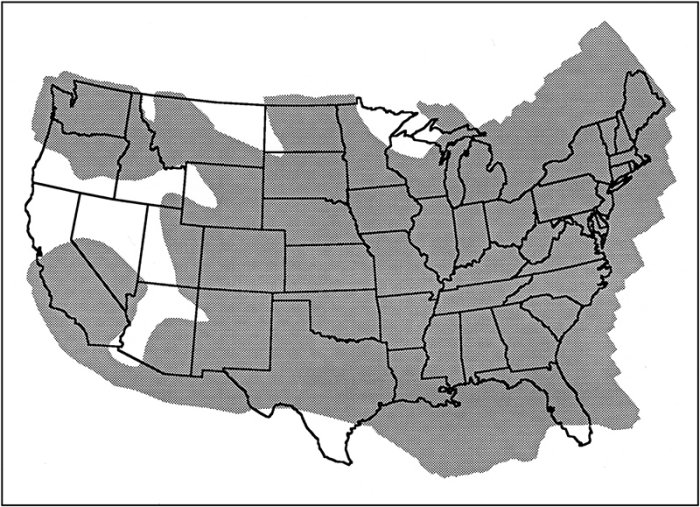
Attempts to contain damage to cities, suburbs, and industries would suffer analogously to the treatment of injured people. Firefighting equipment, water supplies, electric power, heavy equipment, fuel supplies, and emergency communications would be gone. Transportation into and out of stricken cities would be blocked by debris. The scarcity of radiation-monitoring equipment and of personnel trained to operate it would make it difficult to know where emergency crews could safely work. Most of all, there would be no healthy neighboring cities to call on for help; all would be crippled in an all-out war.
Is Nuclear War Survivable?
We’ve noted that more than half the United States’ population might be killed outright in an all-out nuclear war. What about the survivors?
Recent studies have used detailed three-dimensional, block-by-block urban terrain models to study the effects of 10-kiloton detonations on Washington, D.C. and Los Angeles. The results settle an earlier controversy about whether survivors should evacuate or shelter in place: Staying indoors for 48 hours after a nuclear blast is now recommended. That time allows fallout levels to decay by a factor of 100. Furthermore, buildings between a survivor and the blast can block the worst of the fallout, and going deep inside an urban building can lower fallout levels still further. The same shelter-in-place arguments apply to survivors in the non-urban areas blanketed by fallout.
These new studies, however, consider only single detonations as might occur in a terrorist or rogue attack. In considering all-out nuclear war, we have to ask a further question: Then what?
Individuals might survive for a while, but what about longer term, and what about society as a whole? Extreme and cooperative efforts would be needed for long-term survival, but would the shocked and weakened survivors be up to those efforts? How would individuals react to watching their loved ones die of radiation sickness or untreated injuries? Would an “everyone for themselves” attitude prevail, preventing the cooperation necessary to rebuild society? How would residents of undamaged rural areas react to the streams of urban refugees flooding their communities? What governmental structures could function in the postwar climate? How could people know what was happening throughout the country? Would international organizations be able to cope?
Staying indoors for 48 hours after a nuclear blast is now recommended. That time allows fallout levels to decay by a factor of 100.
Some students of nuclear war see postwar society in a race against time. An all-out war would have destroyed much of the nation’s productive capacity and would have killed many of the experts who could help guide social and physical reconstruction. The war also would have destroyed stocks of food and other materials needed for survival.
On the other hand, the remaining supplies would have to support only the much smaller postwar population. The challenge to the survivors would be to establish production of food and other necessities before the supplies left from before the war were exhausted. Could the war-shocked survivors, their social and governmental structure shattered, meet that challenge? That is a very big nuclear question — so big that it’s best left unanswered, since only an all-out nuclear war could decide it definitively.
Climatic Effects
A large-scale nuclear war would pump huge quantities of chemicals and dust into the upper atmosphere. Humanity was well into the nuclear age before scientists took a good look at the possible consequences of this. What they found was not reassuring.
The upper atmosphere includes a layer enhanced in ozone gas, an unusual form of oxygen that vigorously absorbs the Sun’s ultraviolet radiation. In the absence of this ozone layer, more ultraviolet radiation would reach Earth’s surface, with a variety of harmful effects. A nuclear war would produce huge quantities of ozone-consuming chemicals, and studies suggest that even a modest nuclear exchange would result in unprecedented increases in ultraviolet exposure. Marine life might be damaged by the increased ultraviolet radiation, and humans could receive blistering sunburns. More UV radiation would also lead to a greater incidence of fatal skin cancers and to general weakening of the human immune system.
Even more alarming is the fact that soot from the fires of burning cities after a nuclear exchange would be injected high into the atmosphere. A 1983 study by Richard Turco, Carl Sagan, and others (the so-called TTAPS paper) shocked the world with the suggestion that even a modest nuclear exchange — as few as 100 warheads — could trigger drastic global cooling as airborne soot blocked incoming sunlight. In its most extreme form, this nuclear winter hypothesis raised the possibility of extinction of the human species. (This is not the first dust-induced extinction pondered by science. Current thinking holds that the dinosaurs went extinct as a result of climate change brought about by atmospheric dust from an asteroid impact; indeed, that hypothesis helped prompt the nuclear winter research.)
The original nuclear winter study used a computer model that was unsophisticated compared to present-day climate models, and it spurred vigorous controversy among atmospheric scientists. Although not the primary researcher on the publication, Sagan lent his name in order to publicize the work. Two months before Science would publish the paper, he decided to introduce the results in the popular press. This backfired, as Sagan was derided by hawkish physicists like Edward Teller who had a stake in perpetuating the myth that nuclear war could be won and the belief that a missile defense system could protect the United States from nuclear attack. Teller called Sagan an “excellent propagandist” and suggested that the concept of nuclear winter was “highly speculative.” The damage was done, and many considered the nuclear winter phenomenon discredited.
But research on nuclear winter continued. Recent studies with modern climate models show that an all-out nuclear war between the United States and Russia, even with today’s reduced arsenals, could put over 150 million tons of smoke and soot into the upper atmosphere. That’s roughly the equivalent of all the garbage the U.S. produces in a year! The result would be a drop in global temperature of some 8°C (more than the difference between today’s temperature and the depths of the last ice age), and even after a decade the temperature would have recovered only 4°C. In the world’s “breadbasket” agricultural regions, the temperature could remain below freezing for a year or more, and precipitation would drop by 90 percent. The effect on the world’s food supply would be devastating.
Even a much smaller nuclear exchange could have catastrophic climate consequences. The research cited above also suggests that a nuclear exchange between India and Pakistan, involving 100 Hiroshima-sized weapons, would shorten growing seasons and threaten annual monsoon rains, jeopardizing the food supply of a billion people. The image below shows the global picture one month after this hypothetical 100-warhead nuclear exchange.
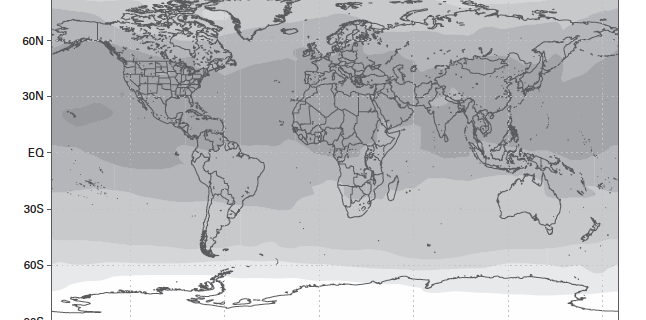
Summary
Nuclear weapons have devastating effects. Destructive blast effects extend miles from the detonation point of a typical nuclear weapon, and lethal fallout may blanket communities hundreds of miles downwind of a single nuclear explosion. An all-out nuclear war would leave survivors with few means of recovery, and could lead to a total breakdown of society. Fallout from an all-out war would expose most of the belligerent nations’ surviving populations to radiation levels ranging from harmful to fatal. And the effects of nuclear war would extend well beyond the warring nations, possibly including climate change severe enough to threaten much of the planet’s human population.
Debate about national and global effects of nuclear war continues, and the issues are unlikely to be decided conclusively without the unfortunate experiment of an actual nuclear war. But enough is known about nuclear war’s possible effects that there is near universal agreement on the need to avoid them. As the great science communicator and astronomer Carl Sagan once said, “It’s elementary planetary hygiene to clean the world of these nuclear weapons.” But can we eliminate nuclear weapons? Should we? What risks might such elimination entail? Those are the real issues in the ongoing debates about the future of nuclear weaponry.
Richard Wolfson is Benjamin F. Wissler Professor of Physics at Middlebury College. Ferenc Dalnoki-Veress is Scientist-in-Residence at the Center for Nonproliferation Studies of the Middlebury Institute of International Studies. This article is excerpted from their book “Nuclear Choices for the Twenty-First Century: A Citizen’s Guide.“
Glossary
air burst A nuclear explosion detonated at an altitude—typically, thousands of feet—that maximizes blast damage. Because its fireball never touches the ground, an air burst produces less radioactive fallout than a ground burst.
blast wave An abrupt jump in air pressure that propagates outward from a nuclear explosion, damaging or destroying whatever it encounters.
direct radiation Nuclear radiation produced in the actual detonation of a nuclear weapon and constituting the most immediate effect on the surrounding environment.
electromagnetic pulse (EMP) An intense burst of radio waves produced by a high-altitude nuclear explosion, capable of damaging electronic equipment over thousands of miles.
fallout Radioactive material, mostly fission products, released into the environment by nuclear explosions.
fireball A mass of air surrounding a nuclear explosion and heated to luminous temperatures.
firestorm A massive fire formed by coalescence of numerous smaller fires.
ground burst A nuclear explosion detonated at ground level, producing a crater and significant fallout but less widespread damage than an air burst.
nuclear difference Phrase we use to describe the roughly million-fold difference in energy released in nuclear reactions versus chemical reactions.
nuclear winter A substantial reduction in global temperature that might result from soot injected into the atmosphere during a nuclear war.
overpressure Excess air pressure encountered in the blast wave of a nuclear explosion. Overpressure of a few pounds per square inch is sufficient to destroy typical wooden houses.
radius of destruction The distance from a nuclear blast within which destruction is near total, often taken as the zone of 5-pound-per-square-inch overpressure.
thermal flash An intense burst of heat radiation in the seconds following a nuclear explosion. The thermal flash of a large weapon can ignite fires and cause third-degree burns tens of miles from the explosion.
